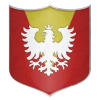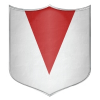Vasca/eraldia: Difference between revisions
mNo edit summary |
mNo edit summary |
||
| Line 1: | Line 1: | ||
'''Vascan''' heraldry originally followed the tradition of Iberian heraldry, a constituent part of the Latin heraldry family. In the late 14th century, it came under significant influence from English heraldry. '''Vascan''' heraldry then evolved, arriving in the 16th century with many specific national features, achieving a peak that was marked by the ordinances of | '''Vascan''' heraldry originally followed the tradition of Iberian heraldry, a constituent part of the Latin heraldry family. In the late 14th century, it came under significant influence from English heraldry. '''Vascan''' heraldry then evolved, arriving in the 16th century with many specific national features, achieving a peak that was marked by the ordinances of '''Prinse Alesandro II''', which defined strict heraldic rules and established the statutes for the officers of arms. | ||
Heraldry declined in '''Vasca''' from the 17th to the 19th century. However, in the late 19th century and especially in the 20th century, it had a strong revival, mainly driven by the high development of the civic, corporate and military heraldry. | Heraldry declined in '''Vasca''' from the 17th to the 19th century. However, in the late 19th century and especially in the 20th century, it had a strong revival, mainly driven by the high development of the civic, corporate and military heraldry. | ||
Revision as of 08:06, 7 September 2016
Vascan heraldry originally followed the tradition of Iberian heraldry, a constituent part of the Latin heraldry family. In the late 14th century, it came under significant influence from English heraldry. Vascan heraldry then evolved, arriving in the 16th century with many specific national features, achieving a peak that was marked by the ordinances of Prinse Alesandro II, which defined strict heraldic rules and established the statutes for the officers of arms.
Heraldry declined in Vasca from the 17th to the 19th century. However, in the late 19th century and especially in the 20th century, it had a strong revival, mainly driven by the high development of the civic, corporate and military heraldry.
La Scermo de Vasca
Arms of Counties
All counties within Vasca have coats of arms; these are often intertwined with local traditions.
|
La Scermo de BejetaLa Scermo de BragaLa Scermo de DelenioLa Scermo de FranconiaLa Scermo de GorosLa Scermo de Masada |
La Scermo de La feudo de MostaLa Scermo de OrdinoLa Scermo de La RocaLa Scermo de SanatLa Scermo de Verona |

